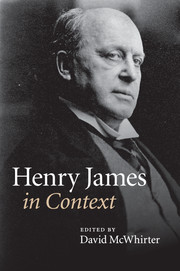Book contents
- Frontmatter
- Contents
- List of Illustrations
- Notes on Contributors
- Preface
- Abbreviations
- Chronology
- Part One Life and career, times and places
- Part Two Historical and cultural contexts
- Part Three Reception
- Chapter 37 Publishing history and contemporary reception
- Chapter 38 Critical response, 1916–1947
- Chapter 39 Critical response, 1947–1985
- Chapter 40 Recent criticism (since 1985)
- Chapter 41 Translation and international reception
- Further reading
- Index
- References
Chapter 41 - Translation and international reception
Published online by Cambridge University Press: 05 August 2014
- Frontmatter
- Contents
- List of Illustrations
- Notes on Contributors
- Preface
- Abbreviations
- Chronology
- Part One Life and career, times and places
- Part Two Historical and cultural contexts
- Part Three Reception
- Chapter 37 Publishing history and contemporary reception
- Chapter 38 Critical response, 1916–1947
- Chapter 39 Critical response, 1947–1985
- Chapter 40 Recent criticism (since 1985)
- Chapter 41 Translation and international reception
- Further reading
- Index
- References
Summary
Walter Allen once wrote that James’s fiction was ‘as ethical in its intentions as it (was) aesthetic’ and that these two aspects of his art could not be separated. Indeed, Henry James’s reception in continental Europe can confirm Allen’s statement insofar as it reveals the double dynamics presiding over a supposedly aestheticist prose whose understanding has always been paradoxically influenced by history and context.
Translation, in non-English-speaking countries, preceded critical reception, but the process was rather slow. James’s prose was disconcerting and the author himself ‘fiercely resisted translation’. The very first text translated was ‘The Last of the Valerii’, which appeared in the 15 November 1875 issue of the Revue des Deux Mondes, as the young author was to discover on his arrival in Paris. Thirteen of his works were actually translated into French during his lifetime, from 1875 to 1914, including The American and Roderick Hudson. On the whole, the last decades of the nineteenth century can be considered as an effective, though timid acknowledgment of the Master’s work. Translations into German started in 1876, with a collection of six tales, very soon followed by Roderick Hudson and three translations of The American. An encouraging debut was also noticeable in Nordic countries: the first Norwegian, Danish and Swedish translations came out in the late 1870s. Russian reception seemed promising: translations started in 1876 with ‘The Last of the Valerii’ and ‘The Madonna of the Future’ and more than ten titles, mainly stories but also one novel, appeared in Russia, very often soon after their publication in the West. Mention should also be made of Poland, with The American in 1878, Confidence in 1881 and ‘The Madonna of the Future’ in 1877. One Hungarian translation of ‘A Passionate Pilgrim’ came out in the 1870s, at a time when a keen interest in foreign cultures developed in a country that could be considered as ‘the most rapidly transforming part of the Habsburg monarchy’; the first Czech translation appeared in 1883. Surprisingly enough, southern Europe lagged behind during the author’s lifetime, with two exceptions: a translation of chapters 1–5 of The Portrait of a Lady published in an Italian magazine as early as 1881, and the first translation into Portuguese in 1910.
- Type
- Chapter
- Information
- Henry James in Context , pp. 445 - 458Publisher: Cambridge University PressPrint publication year: 2010



